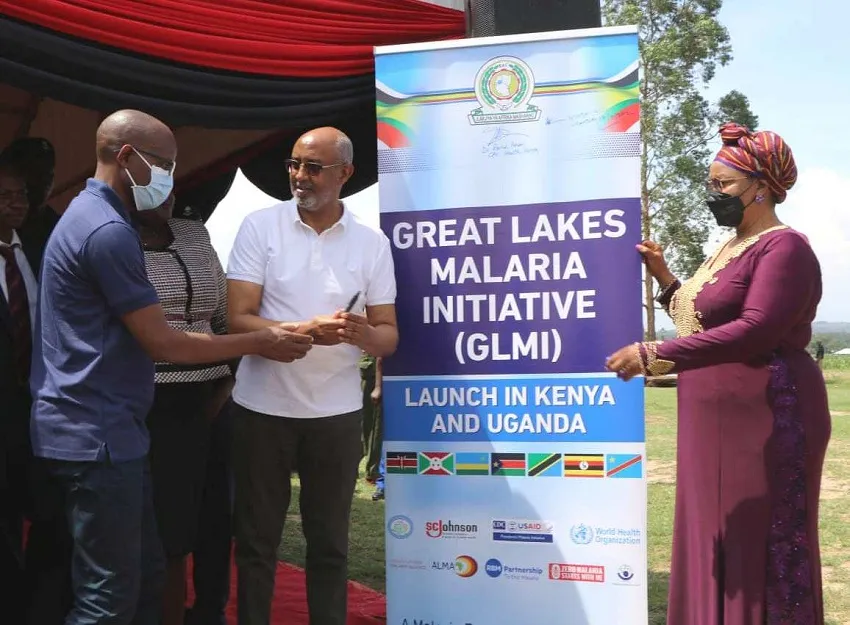Amref reveals plan to improve health access for 25 million Kenyans over the next five years
Friday, 16 March, 2018

NGO seeks Ksh 26 billion for health programmes to support national and county health agenda
Nairobi, March 15, 2018 … Amref Health Africa in Kenya has today unveiled a plan to support the improvement of primary health care for 25 million people in the country over the next five years.
The ambitious plan, which will cost Ksh 26 billion (USD 262 million), focusses on improving access to basic health care services by underserved communities, women, children and the youth.
Speaking at the launch of Amref Health Africa in Kenya’s Strategic Plan 2018- 2022, Amref’s Country Director in Kenya Dr Meshack Ndirangu said the organisation will alter its business model in the face of increasing competition from non-traditional development players, shifting donor funding priorities and unpredictable changes in the donor policy environment driven by key issues like migration and security.

Dr Meshack Ndirangu, Amref Health Africa in Kenya Country Director
“In our new strategy, we have put emphasis on domestic resource mobilisation and on entrepreneurial and sustainability approaches while taking bold steps to increase internal efficiency and effectiveness so that we can fulfil our core mandate of improving health in communities,” said Dr Ndirangu.
He added that the new Strategic Plan reflects the changing national and global context in which Amref Health Africa is operating.
“This plan contributes to the Government of Kenya’s Vision2030 to transform the country into an industrialised, middle-income nation providing a high quality of life to all its citizens. It spells out Amref Health Africa’s leadership role in health development, in particular supporting the Government’s agenda to strengthen devolved governance and institutions for improved health service delivery by the county governments,” he said.
To achieve its goal, the organisation plans to increase the skills of 120,000 health workers, support enrolment of 20 million Kenyans onto NHIF by working with community health workers, and develop innovative solutions to increase access to and use of health services.
Amref has operations and diverse health programmes covering all 47 counties in Kenya with a current annual average budget of Kshs 4 billion (US$ 40 million). Dr Ndirangu said the NGO would seek a minimum annual growth of 10 per cent by diversifying its income base.
According to Dr Meshack, the move “from aid to trade” is envisaged to sustain Kenya’s economic growth and benefit its citizens. To promote Universal Health Coverage, Amref will continue to partner with communities, national and county ministries of health and other Government agencies, donors, civil society and the private sector.
The plan also addresses emerging issues in health including non-communicable diseases and use of technology to improve health services.
“Emerging trends point to the fact that non-communicable conditions will increase in the foreseeable future to become the leading contributors to the burden of disease in the country, although the role of communicable diseases will remain significant,” said Dr Ndirangu.
The Cabinet Secretary for Health, Sicily Kariuki said her Ministry was in the process of configuring the National Hospital Insurance Fund to use community health workers to improve NHIF coverage.
“My Ministry intends to work with partners like Amref Health Africa to extend NHIF coverage through use of extensive community health workers network,” said Kariuki.
She said her Ministry is working towards achieving 100 percent Universal Health coverage by 2022 from the current 36 percent. Kariuki said the national health budget is expected to increase from Kshs 61 billion in 2018 to Ksh 73 billion by 2021.
Even though Kenya has become a lower-middle income country, poverty rates remain high at 42 per cent and the unemployment rate among its working age population stands at 39.1 per cent, which is the highest in East Africa.
The World Bank Group in 2016 rebased the country’s economy to a lower-middle income country. This has triggered the commencement of a shift among development agencies away from traditional donor-recipient relations with Kenya to more equal bilateral partnerships of doing business with Kenya by 2022.
Kenya continues to under-invest in health despite being a signatory to the Abuja Declaration of 2001 where African Union Countries pledged to allocate at least 15 percent of their total annual budgets to health.

Amref Health Africa Group CEO Dr Githinji Gitahi (Right) Dr Peter Cherutich, Head of preventive and promotive health service, during Launch of Amref Health Africa in Kenya’s Strategic Plan







